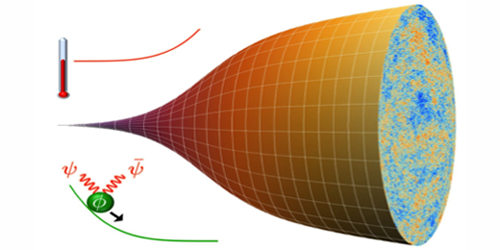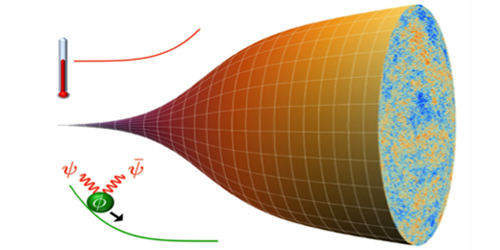Little Higgs Gives Warm Inflaton a Hand
Two decades after it was proposed as an alternative view of inflation, warm inflation, which involves warm rather than cold cosmic temperatures, has still not grown into a full-fledged theory. Unlike for standard inflation, researchers have not been able to build a simple and compelling model for warm inflation from first principles. Until now, that is. In a new study, the original proponent of warm inflation, Arjun Berera from the University of Edinburgh, UK, and colleagues have borrowed a concept from particle physics theories to derive just such a model. The result dispels the prevailing view that developing simple first-principles models of warm inflation would be impossible.
In standard inflation, any preexisting radiation is stretched and dispersed during a brief cosmic phase and no new radiation is produced. The Universe’s temperature plummets by several orders of magnitude, and an ensuing reheating period fills the Universe with radiation again. Warm inflation is simpler. New radiation is constantly produced by the decay of the scalar field that triggers inflation, the inflaton; the temperature remains large; and there is no reheating phase. Ironically, however, models of warm inflation have so far required thousands of additional fields to be coupled to the inflaton to avoid large corrections to its mass.
Making use of a mechanism that stabilizes the Higgs boson mass in particle physics theories called little Higgs, Berera and colleagues built a model involving only four additional fields and no mass corrections. The researchers then compared the model’s observational predictions with constraints on inflation derived from Planck satellite measurements of the cosmic microwave background radiation and found good agreement between the two.
This research is published in Physical Review Letters.
–Ana Lopes
Ana Lopes is a Senior Editor of Physics.





